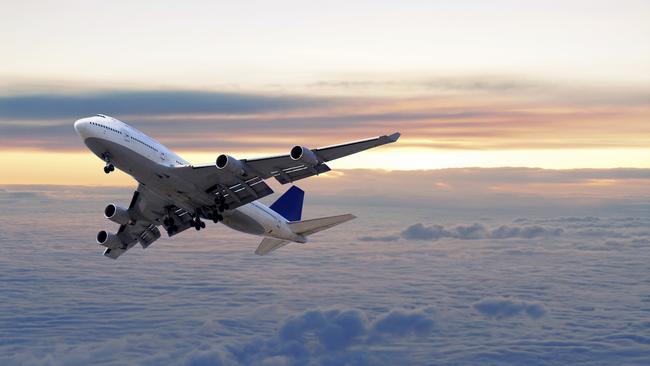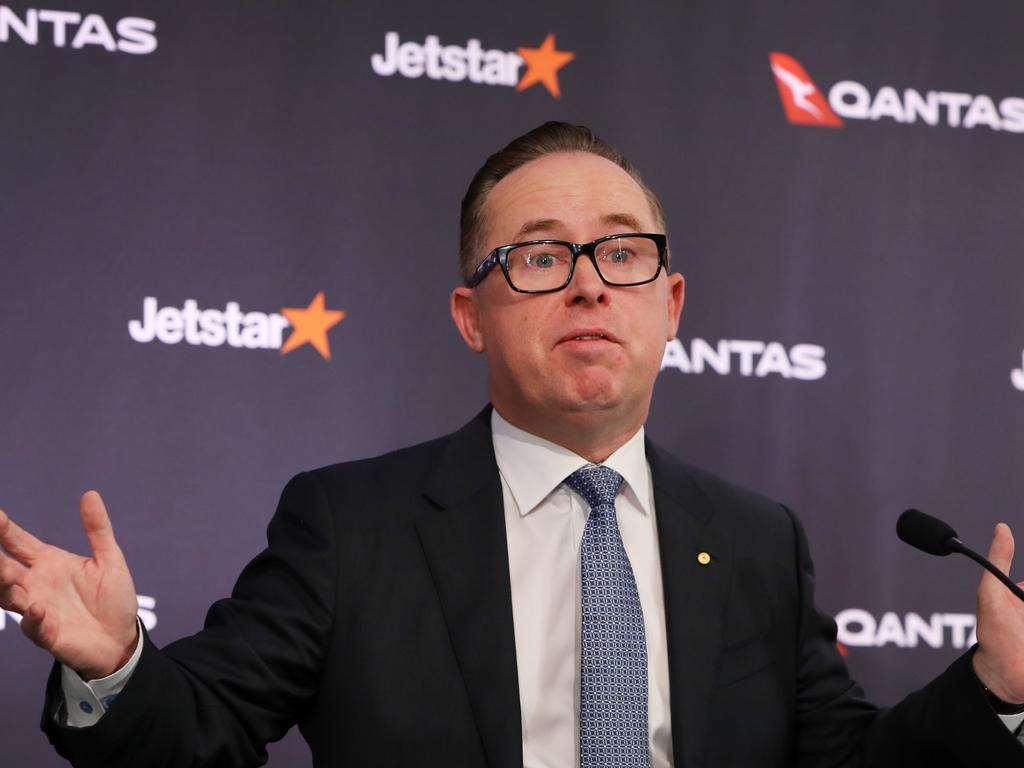Airfares fall from December highs but prices still eclipse pre-Covid
New data shows airfares have fallen as much as 23 per cent from last year’s highs but travellers are still paying through the nose.
Business
Don't miss out on the headlines from Business. Followed categories will be added to My News.
Airfares have fallen as much as 23 per cent since late last year but travellers are still paying much more than they did pre-Covid, particularly on international routes.
Webjet data showed the average booking value for domestic flights fell 23.3 per cent in February compared to November 2022, and international fares cooled by 5.1 per cent.
Trans-Tasman fares were 20.6 per cent more affordable last month than late last year when pent-up travel demand peaked.
A snapshot of airfares on popular routes compared to the same time in 2022 and 2019 told a different story however, with prices up as much as 82 per cent.
In February, the average return fares on Webjet for Sydney-London were $3321, compared to $2985 in 2022 and $2470 pre-Covid.
Melbourne-Singapore costs an average $1470 now, up from $980 a year ago, and $875 in 2019.
Brisbane-Bali was also much more expensive, with return economy fares at $1030 compared to $700 in February 2022 and $650 in 2019.
And Perth-London had seen a 47 per cent increase on 2019 rates, with fares now $2665 on average, up from $2150 a year ago, and $1810 pre-pandemic.
Other routes where travellers needed to shell out a lot more to fly were Perth-Denpasar at $830 return up from $490 pre-Covid; Sydney-Hong Kong at $1970 from $1080; and Sydney-LA at $2035 from $1375.
The fares were across all airlines featured on Webjet and echoed a warning from Qantas last week that prices would remain significantly above pre-pandemic levels for some time.

On Friday, Qantas chief executive Alan Joyce reiterated those sentiments, saying airfares had to be higher because of the price of fuel and the pace at which international capacity was being restored.
“Fuel is 65 per cent higher for us than it was in 2019 so airfares to cover that will be 10 to 20 per cent higher,” Mr Joyce said.
“International capacity is going to take longer to get back because it’s a slow process to return international aircraft to service. A380s need about 100-days of maintenance and every maintenance facility in the world is chockablock.
“We’ve got seven A380s back in service but it’s going to take a couple of years to get the other three back.”
November data compiled by the Bureau of Infrastructure, Transport and Regional Economics showed the number of international airlines seats on flights to and from Australia were 36 per cent below 2019 levels.
Seat utilisation remained at record highs however, with an average of 85.5 per cent of seats on every flight filled.
Australian Federation of Travel Agents chief executive Dean Long said they were starting to see airfares come off the boil, particularly on domestic and some international routes.
He said the exception was fares to Europe in the northern summer, which remained sky high due to the demand.
“There is just not enough capacity on those routes,” Mr Long said.
Elsewhere there was downward pressure on prices as travellers’ willingness to fork out large sums of money to fly “hit a cap”.
“There’s still a lot of pent-up demand for travel but people aren’t willing to pay the prices they were last year, and as a result fares have come off the highs of 2022,” Mr Long said.
“Corporate travellers are the exception, because they’re not as price sensitive as the leisure traveller.”
Don’t Forget Travel Group director Andrew Sullivan said as more capacity came into the market, seats were being filled particularly in the pointy end of the plane.
“There still doesn’t seem to be enough flights or the airlines are using smaller planes,” Mr Sullivan said.
“International business class has come slightly down on what it was last year — instead of $16,000 or $18,000 return to Europe, fares are now around $11,000 to $12,000 and there are some to be had in the high $8000s or $9000 with carriers like Turkish Airlines.”
More Coverage
Originally published as Airfares fall from December highs but prices still eclipse pre-Covid





